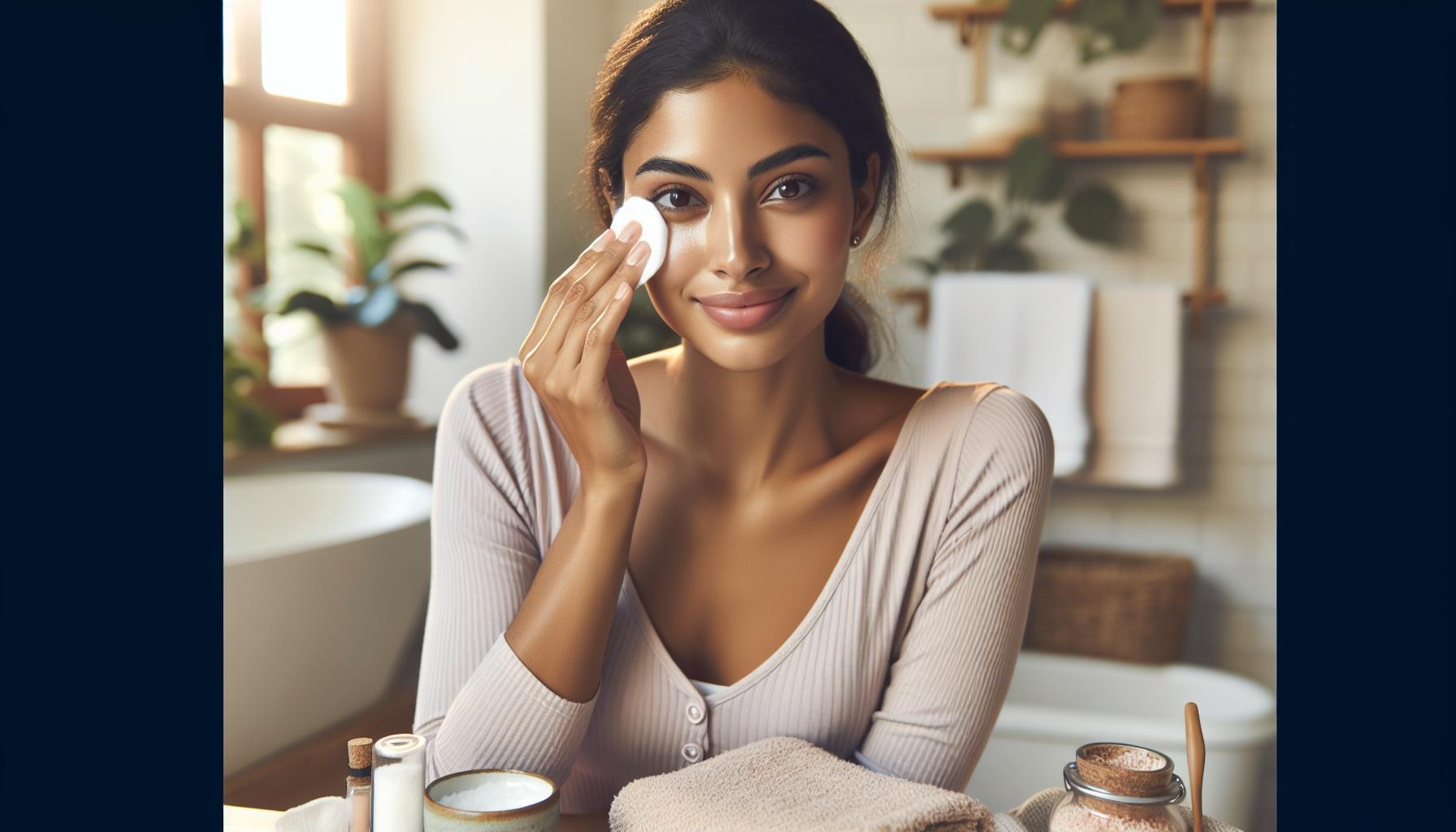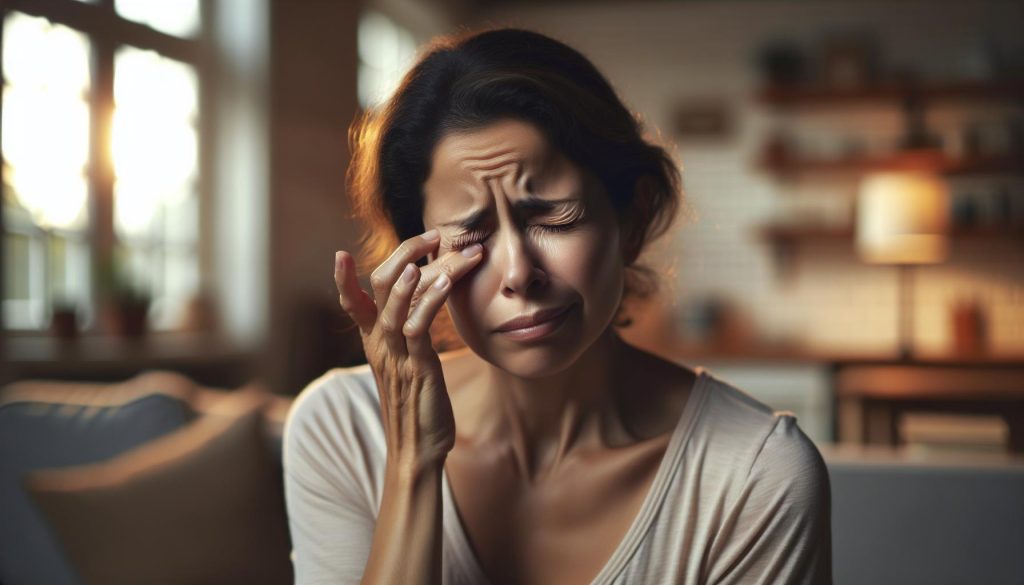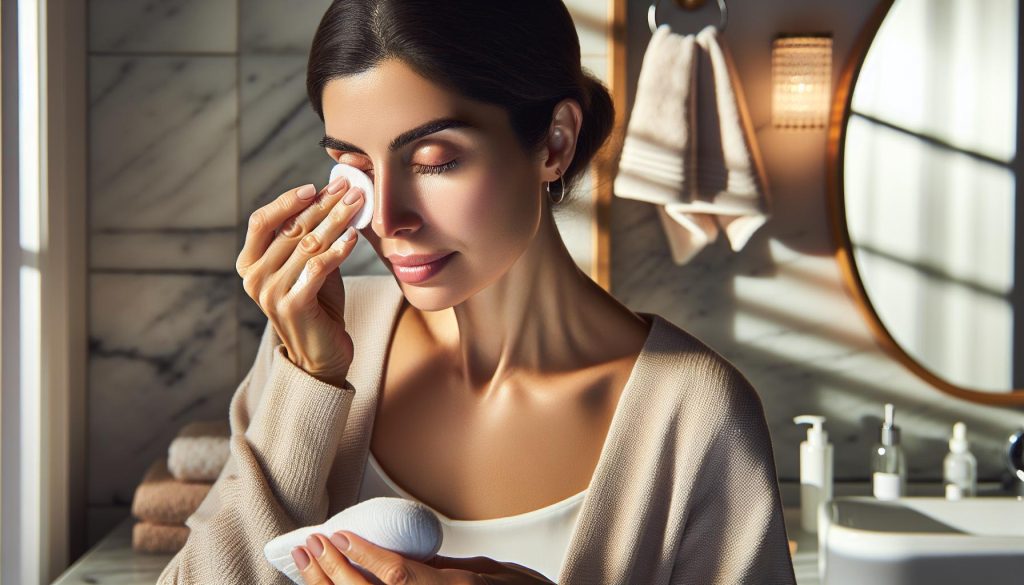Have you ever noticed a painful lump on your eyelid and wondered if you could have more than one stye? It’s a surprisingly common concern. Styes, often caused by bacterial infections in oil glands, can affect one eye or both, leading to discomfort and worry about your eye health. Understanding the signs and knowing when to seek medical help is essential, especially if symptoms persist or worsen. This guide will explore the possibility of multiple styes in one eye, empowering you with knowledge to address your concerns and take proactive steps toward healing and relief. Keep reading to learn more about this condition and effective care strategies.
Can You Have Multiple Styes in One Eye?
Having multiple styes in one eye might seem unusual, but it is indeed possible. Styes, or hordeola, are localized infections caused by bacteria, often resulting from blocked oil glands in the eyelid. When the glands become clogged, bacteria can multiply, leading to inflammation and the formation of a stye. If not addressed promptly, additional styes can develop in the same area, resulting in a situation where you may end up with more than one stye affecting a single eye.
If you notice one stye, it’s essential to monitor the area closely. Multiple styes can occur if the underlying causes, such as poor hygiene or gland blockage, are not resolved. Signs to look out for include increased redness, swelling, or tenderness in the eyelid, which might indicate a worsening condition. In such cases, treatment options become crucial. Home remedies like warm compresses can typically help alleviate discomfort and promote drainage, but if multiple styes develop or persist, it’s advisable to seek medical help.
Promptly addressing multiple styes is vital not just for comfort but also to prevent potential complications, like the spread of infection. If a stye does not improve with home care, it’s important to consult a healthcare provider. They may prescribe antibiotic ointments or oral antibiotics to tackle the bacteria effectively. In more severe cases where the styes are large, a doctor might need to drain them to expedite healing and relieve pressure.
To summarize, while having more than one stye in one eye can be concerning, understanding the causes and knowing when to seek help can empower you to take the right actions. Regular eye hygiene practices, such as gently cleaning the eyelids and avoiding eye makeup during flare-ups, can also significantly reduce the likelihood of developing additional styes.
Understanding What a Stye Is

Styes, medically known as hordeola, may seem like a small annoyance, but understanding what they are can empower you when they occur. These small, painful bumps near the eyelids arise from bacterial infections, typically linked to blocked oil glands. The eyelids contain various glands designed to produce oils necessary for lubrication, and when these glands become clogged, they create the perfect environment for bacteria, particularly Staphylococcus aureus, to thrive. This can lead to an inflammatory response, causing the tissue to swell and form a stye.
While many people only experience one stye at a time, the condition can indeed lead to multiple styes forming in the same eye. This situation arises particularly when the initial stye is not treated effectively, as the underlying issues-such as unresolved blockage of the oil glands or diabetes, which can impact overall skin health-remain unchanged. When examining a stye, you might notice symptoms like redness, tenderness, and possibly the development of a yellowish pus-filled point at the center. At times, multiple styes can develop, compounding discomfort and complications.
If you encounter these symptoms, consider some essential steps for management. Gently applying warm compresses to the affected area can help alleviate discomfort and promote drainage. It’s crucial to resist the urge to pop the stye, as this could exacerbate the infection or spread bacteria. Instead, maintaining hygiene around the eyes is paramount. Regularly cleaning your eyelids with mild soap or specific eyelid cleansers can help prevent future occurrences.
Ultimately, while provides a solid foundation for managing this common condition, remaining vigilant about changes in your eye health and knowing when to seek medical attention are equally important. If a stye does not improve after a couple of days of home treatment, or if new styes appear, it’s advisable to consult a healthcare provider. Medical professionals may offer treatments such as antibiotic ointments or suggest drainage procedures for larger styes, ensuring prompt relief and recovery.
Signs and Symptoms of Styes to Watch For

Styes can be irritating little nuisances, but knowing their signs and symptoms can help you respond swiftly and effectively. When a stye forms, it typically presents as a small, painful bump on or near the eyelid, often accompanied by redness and inflammation. The affected area may feel tender to the touch, and you might notice increased sensitivity around your eye. In some cases, a stye can develop a yellowish point at its center, indicating the presence of pus, which is a sign of infection.
Along with these visible signs, a stye may also cause discomfort that affects your everyday life. You might experience tearing and irritation while blinking, and in more severe cases, the bump can lead to swelling that partially obstructs your vision. If you notice these symptoms, especially if they progressively worsen or if you develop multiple styes, it’s critical to address the situation promptly. Early awareness and intervention are invaluable for preventing complications and ensuring your overall eye health.
It’s important to be attentive to changes as well. If you experience persistent pain, difficulty opening your eye, or changes in your vision, these could be indicators of a more serious issue. Styes are generally harmless, but monitoring their progression will help determine whether they’re merely a common annoyance or a sign that requires medical attention. The key is to listen to your body and act accordingly; if the styes don’t improve with home treatment or if they recur frequently, reaching out to a healthcare provider is the best course of action.
Treatment Options: Home Remedies vs. Medical Solutions
Dealing with styes can be frustrating, but understanding your treatment options can empower you to manage them effectively. For many, home remedies are the first line of defense. One of the simplest and most effective methods involves warm compresses. By soaking a clean washcloth in warm water, wringing it out, and applying it to the affected area for about 10 to 15 minutes, several times a day, you can promote drainage and healing. This technique not only soothes discomfort but may also help reduce swelling and redness.
While home treatments often suffice, it’s important to recognize when medical solutions are necessary. If your stye persists for more than a few days, or if you notice multiple styes developing in one eye, consulting a doctor is wise. Medical professionals may prescribe antibiotic eye ointments or drops, particularly if there is evidence of infection. In some cases, if a stye becomes particularly large or fails to respond to initial treatments, a procedure known as lancing may be required to drain the contents safely.
Regardless of the treatment path you choose, it remains crucial to maintain good hygiene. This includes washing your hands frequently, avoiding touching or rubbing your eyes, and using clean towels and washcloths. Incorporating these practices into your daily routine can significantly reduce your risk of developing styes in the future. Whether opting for at-home remedies or seeking medical advice, taking proactive steps will not only support your eye health but also help you feel more in control and comfortable.
When to See a Doctor for Styes
It’s common to feel concerned when you notice multiple styes developing in one eye, especially if you’re already living with one. While styes typically resolve on their own, there are key indicators that signal it’s time to seek medical help. If you experience a stye that persists beyond a week or two despite home remedies, it’s advisable to consult a healthcare professional. This holds particularly true for multiple styes; their presence can suggest a more significant underlying issue that requires attention.
When faced with discomfort that intensifies or if you notice increased swelling and redness, don’t hesitate to reach out for support. In some cases, a stye may become infected. Signs of an infection could include fever, discharge of pus, or an increase in pain. If you encounter these symptoms, prompt evaluation and treatment are essential. Medical professionals can provide antibiotic eye ointments or drops that specifically target bacterial infections, effectively shortening recovery time and reducing complications.
It’s also wise to seek help if you frequently develop styes. This could indicate an issue with your eyelid glands, such as blockage or inflammation. Consulting with an eye care specialist can lead to tailored advice and preventive measures to reduce recurring styes and support your overall eye health. Remember, taking proactive steps not only protects your vision but also empowers you to regain comfort and clarity in your daily life.
Potential Complications of Untreated Styes
Ignoring multiple styes can lead to significant complications that can disrupt your daily life and overall eye health. When styes, also known as hordeola, are left untreated, they can develop into more severe conditions. For instance, what starts as a simple stye can evolve into a chalazion, which is a painless lump resulting from a blocked oil gland. While chalazia might not necessarily hurt, they can cause persistent discomfort and affect your vision, leading to further interventions.
Furthermore, untreated styes can sometimes progress to more serious infections, such as cellulitis, which is an infection of the eyelid and surrounding skin. This can present with symptoms such as increased redness, swelling, and pain around the eye, along with potential fever. The infection can spread, posing more serious risks, including complications that could affect vision. If pus accumulates and the stye becomes fluctuant, a doctor may need to drain it, and antibiotic treatment could become necessary to tackle any spreading infection.
Additionally, the recurrent formation of styes may indicate underlying issues such as blepharitis, an inflammation of the eyelids that can require ongoing management to prevent future occurrences. Not addressing the root cause of styes could lead to a cycle of infection and inflammation, impacting not just your eyes but your overall well-being.
In conclusion, while styes are often harmless and can resolve on their own, being vigilant and proactive about your eye health is crucial. If you notice persistent or multiple styes, seeking medical attention can prevent complications and ensure effective treatment. Regular eye care, maintaining good hygiene, and consulting with a healthcare professional when needed can help maintain your eye health and reduce the risk of future styes.
Preventive Measures to Avoid Getting Styes
Styes can be as uncomfortable as they are common, often rearing their ugly heads at the most inconvenient times. To minimize the risk of developing styes, it’s crucial to adopt some effective preventive measures that can help safeguard your eye health. By understanding how to keep your eyelids clean and maintaining a healthy lifestyle, you can significantly reduce the likelihood of encountering these painful bumps.
One of the most effective ways to prevent styes is through proper eyelid hygiene. Make it a habit to cleanse your eyelids regularly to remove excess oil, debris, and any potential bacteria. You can use warm water with a gentle soap or over-the-counter eyelid scrub pads. Remember to avoid touching your face with dirty hands and always wash your hands thoroughly before applying makeup or touching your eyes.
In addition to maintaining cleanliness, mind your makeup and skincare products. Ensure that any cosmetics you use on or near your eyes are non-comedogenic and free from harmful ingredients. Discard old makeup-especially eye products-since bacteria can thrive in aging cosmetics. Furthermore, avoid sharing eye makeup and tools, as this can lead to the spread of bacteria.
A strong relationship with your overall health can also affect your eye well-being. Eating a balanced diet rich in vitamins A, C, and E-as well as omega-3 fatty acids-can bolster your immune system and help your body fend off infections. Incorporating more fruits, vegetables, and whole grains into your diet supports overall skin health, including the delicate skin around your eyes.
Lastly, keep an eye on chronic conditions such as blepharitis, which can lead to recurrent styes. If you have frequent stye occurrences, consulting a healthcare professional may unveil underlying issues that require attention. By being proactive in these areas, you can help prevent the onset of styes and keep your eyes looking and feeling their best.
Is There a Connection Between Styes and Other Eye Issues?
When it comes to styes, understanding their relationship with other eye issues can be crucial for maintaining overall eye health. Styes themselves are localized infections that occur in the eyelids, often resulting from clogged oil glands or hair follicles. However, they can be indicative of underlying problems, especially if they recur frequently.
One common condition associated with recurrent styes is blepharitis, which is characterized by inflammation of the eyelid margins. This chronic issue can lead to an environment that is conducive to the formation of styes, as it creates conditions for oil gland blockage and bacteria proliferation. It’s important to manage blepharitis effectively through regular eyelid hygiene, such as warm compresses and gentle cleansing, to minimize stye occurrences.
Additionally, other eye disorders, such as chalazia-which are similar to styes but result from blocked meibomian glands-may also develop, especially in people who are prone to oil gland dysfunction. If someone experiences multiple styes, it’s wise to consult a healthcare provider to rule out other conditions that might be affecting the eyelids.
In some cases, a stye could be mistaken for more serious conditions, such as preseptal cellulitis, an infection of the eyelid and surrounding areas, which requires immediate medical attention. If you notice increased redness, swelling, or pain extending beyond the eyelid, it is crucial to seek prompt evaluation to avoid complications.
Understanding the interconnectedness of styes with other eye issues empowers individuals to take proactive steps in their eye care. Incorporating routine eyelid hygiene and monitoring any changes in eye health can lead to early detection and treatment, ultimately promoting long-lasting eye wellness.
The Role of Hygiene in Eye Care
Maintaining good hygiene is essential for preventing and managing styes, particularly since these pesky infections often arise from bacterial buildup and clogged oil glands in the eyelids. It’s fascinating to note that simple daily habits can protect your eye health and reduce the likelihood of developing multiple styes or other eyelid concerns. By incorporating regular cleaning into your routine, you can keep your eyelids free of debris and bacteria, which is crucial in minimizing your risk of infections.
One effective way to promote eyelid hygiene is through the use of warm compresses. Not only do they soothe discomfort, but they also help loosen blocked glands, making it easier for natural oils to flow. Here’s how to do it:
- Prepare a Clean Cloth: Soak a soft, clean cloth in warm (not hot) water.
- Apply to the Eye: Gently place the warm cloth over your closed eyelid for 5 to 10 minutes.
- Repeat Regularly: Doing this two to three times a day can prevent future stye occurrences.
In addition to warm compresses, gently cleaning your eyelids with a mild soap or eyelid scrub can help. You can use commercially available eyelid scrub pads or make your own solution with diluted baby shampoo. Carefully wash the eyelid margins with a clean cotton pad to remove any buildup of oils and debris, significantly reducing the risk of blockages.
Also, avoid touching your eyes or eyelids with unwashed hands, and never attempt to pop or squeeze a stye. Viral or bacterial infections can proliferate if you introduce new pathogens, leading to more significant issues. Always ensure that any makeup tools or contact lenses are kept clean to further protect your eyes from infection.
By making these simple practices a part of your daily routine, you can enhance your overall eye health, potentially decreasing the frequency of styes and their related discomfort. Good eyelid hygiene empowers you to take control of your health and provides a strong foundation for keeping your eyes clear and bright.
Differentiating Styes from Other Eye Conditions
When faced with a red bump on your eyelid, it’s essential to distinguish whether it’s a stye or a different eye condition, as treatment approaches can vary significantly. Styes, or hordeola, typically present as small, painful lumps at the edge of the eyelid, often accompanied by swelling and tenderness. Their characteristic warm feeling and the presence of a pus-filled point can help confirm their identity. However, other conditions, such as chalazia, conjunctivitis, or even skin conditions like eczema and psoriasis, may exhibit similar symptoms but require different treatments.
### Common Conditions to Differentiate
- Chalazia: Unlike styes, chalazia are usually painless lumps that occur in the eyelid due to blocked oil glands. They can develop more gradually than styes and may not always cause redness or swelling. A chalazion often needs warm compresses and can sometimes require medical intervention if it doesn’t improve.
- Conjunctivitis: Often presenting as redness and discharge, conjunctivitis affects the conjunctiva-a thin layer covering the white part of the eye. It can cause itchiness and a watery discharge, unlike the localized swelling of styes.
- Blepharitis: This condition is characterized by inflammation of the eyelid margins, often leading to crusted lashes and a gritty sensation in the eyes. Proper hygiene and warm compresses can assist in managing blepharitis.
- Skin Conditions: Diseases like eczema or psoriasis can also cause flaky, swollen eyelids, and may require dermatological treatment rather than specific eye care solutions.
Understanding these conditions is crucial, especially when multiple bumps appear, prompting the question of whether they could be multiple styes. While it’s possible to have more than one stye in a single eye due to bacteria or blocked glands affecting different areas, an unusual number of bumps could indicate a need for medical evaluation. Being proactive about eye health-and seeking guidance when symptoms persist-ensures that you’re not only dealing with the most common issues but also staying aware of potentially more serious eye conditions that may require professional treatment.
Nutritional Advice for Eye Health
To maintain optimal eye health, nutrition plays a crucial role, particularly in reducing the likelihood of developing conditions like styes. Incorporating specific vitamins and minerals into your diet can enhance the overall health of your eyes and bolster your immune system, potentially preventing infections that lead to styes.
A balanced diet rich in antioxidants, omega-3 fatty acids, and essential vitamins is crucial for maintaining eye health. Consider adding the following foods to your meals:
- Leafy Greens: Vegetables such as spinach, kale, and collard greens are packed with lutein and zeaxanthin, powerful antioxidants that protect against eye diseases.
- Fatty Fish: Salmon, mackerel, and sardines are excellent sources of omega-3 fatty acids, which are known to improve eye moisture and reduce inflammation.
- Nuts and Seeds: Almonds, walnuts, and flaxseeds provide vitamin E and omega-3s, both beneficial for maintaining eye health.
- Carrots and Sweet Potatoes: High in beta-carotene, which the body converts to vitamin A, these foods promote good vision and eye health.
- Citrus Fruits: Oranges, grapefruits, and lemons are high in vitamin C, essential for the health of blood vessels in the eyes.
Hydration Matters
Staying hydrated is another key factor. Dehydration can lead to dry eyes, making it easier for bacteria to enter and irritate the eyelids. Aim to drink plenty of water throughout the day to keep your body, including your eyes, well-hydrated.
Supplements and Their Benefits
If it’s challenging to obtain all the necessary nutrients from your diet alone, consider speaking with a healthcare professional about supplements. Vitamins such as A, C, E, and the B-complex group can be beneficial, as well as omega-3 supplements for additional support in maintaining eye moisture.
By prioritizing nutrition, you empower yourself to take charge of your eye health and potentially lower the risk of styes and other eye-related concerns. Making small dietary changes can lead to significant long-term benefits for your eye health, encouraging a lifestyle rooted in wellness and prevention.
Support and Resources for Managing Eye Care
Managing eye care effectively, especially when dealing with conditions like styes, requires a proactive and informed approach. It’s vital to stay educated on the best practices and available resources to ensure your eyes remain healthy and your experiences with styes are minimal or manageable. Many women wonder if there are simple yet effective resources available to aid in eye care, and the good news is, there are many!
Consider establishing a routine that includes gentle eyelid hygiene, especially if you’re prone to styes. Daily cleaning with a warm compress can help unclog oil glands in your eyelids and can be particularly beneficial if you notice any redness or irritation. Using a diluted solution of baby shampoo can also serve as a gentle cleanser to keep your eyelids free from dirt and oils. Remember to wash your hands thoroughly before touching your eyes or applying any products, as good hygiene is your first line of defense against infections.
Additionally, there are numerous online resources dedicated to eye health. Websites like the American Academy of Ophthalmology and the American Optometric Association offer valuable insights and tips on maintaining eye health, recognizing symptoms of eye problems, and treating various conditions. Many eye care professionals also provide educational handouts and brochures during visits, which can serve as helpful guides for self-care at home. If you need to seek advice, telehealth services can link you with qualified eye care professionals who can give tailored recommendations directly from the comfort of your home.
Lastly, don’t underestimate the power of community support. Participating in forums or support groups focused on eye health can be an excellent way to share experiences and learn from others who face similar challenges. Whether learning about home remedies or gaining insights on how to approach eye care more holistically, such interactions can empower you to take charge of your eye health confidently and effectively. Always remember, being proactive about your eye care can make a significant difference in preventing styes and maintaining overall eye health.
Frequently Asked Questions
Q: Can you have two styes in one eye at the same time?
A: Yes, it is possible to have two styes in one eye concurrently. Styes occur when oil glands in the eyelid become blocked and infected, leading to inflammation. Multiple blockages can happen in close proximity, resulting in more than one stye forming. Maintain good hygiene to help prevent outbreaks.
Q: What triggers the formation of multiple styes?
A: Multiple styes can be triggered by various factors, including poor eyelid hygiene, stress, hormonal changes, and underlying skin conditions. Individuals with conditions like blepharitis or rosacea may be more susceptible. Regularly cleaning your eyelids can reduce the risk of developing styes.
Q: How can you differentiate between styes and other eye conditions?
A: Styes typically appear as red, painful lumps on the eyelid, often with surrounding swelling. Unlike infections such as conjunctivitis, styes are localized and may have a small pus-filled center. If symptoms persist or worsen, consult an eye care professional for accurate diagnosis.
Q: Are there specific home treatments for multiple styes?
A: Yes, home treatments for multiple styes include warm compresses applied to the affected area for 10-15 minutes several times a day. This encourages drainage. Over-the-counter pain relievers can alleviate discomfort, but it’s crucial to avoid squeezing styes to prevent further infection.
Q: How do underlying health conditions affect stye recurrence?
A: Conditions like diabetes or immune system disorders can increase the likelihood of recurrent styes. These conditions may affect healing and the ability to fend off infections. Maintaining overall health through a balanced diet and regular check-ups can help mitigate this risk.
Q: Can allergies contribute to the development of styes?
A: Yes, allergies can lead to increased rubbing or touching of the eyes, which may introduce bacteria and contribute to stye formation. Identifying and managing allergens can help reduce this risk. Consider discussing allergy management with a healthcare professional for better eye health.
Q: What should you do if a stye does not improve after treatment?
A: If a stye does not improve after a few days of home treatment, or if it worsens or affects vision, seek medical attention. A healthcare provider can assess the stye and may recommend other treatments, such as drainage or antibiotic therapy.
Q: Can lifestyle choices impact the likelihood of developing styes?
A: Yes, lifestyle choices such as proper hygiene, a balanced diet rich in vitamins, and avoiding makeup sharing can significantly impact the likelihood of developing styes. Maintaining a clean environment for your eyes is essential, and staying hydrated supports overall eye health.
Insights and Conclusions
If you’re experiencing multiple styes or suspect you may have them in one eye, it’s crucial to seek medical advice promptly to prevent complications. Remember, timely intervention can make a significant difference in your eye health and comfort. Explore our articles on eye care tips and common eye issues to expand your knowledge and empower your skincare routine.
We invite you to share your experiences or ask questions in the comments below-community support is vital in navigating health concerns. Don’t forget to subscribe to our newsletter for more insights on women’s health and beauty, ensuring you stay informed on best practices and at-home remedies. Your health matters, and taking these steps today can lead to a more vibrant tomorrow!




